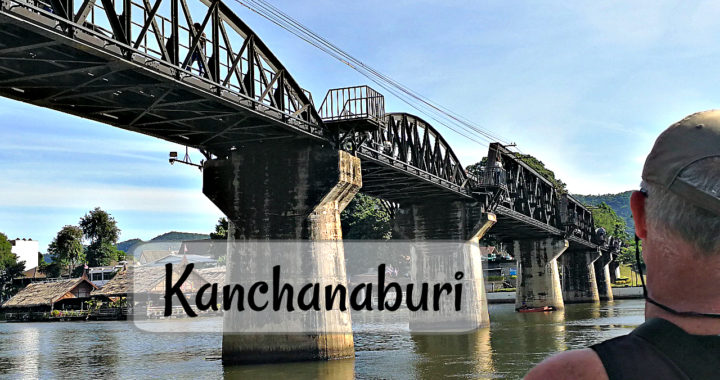Sangkhlaburi to Kanchanaburi
It was back to the bus depot (a muddy yard) to catch the local bus back towards Kanchanaburi.
This was going to an even longer bus ride (approximately 5.5hrs) as Kanchanaburi is further along the route than where we originally set off from at Nam Tok.
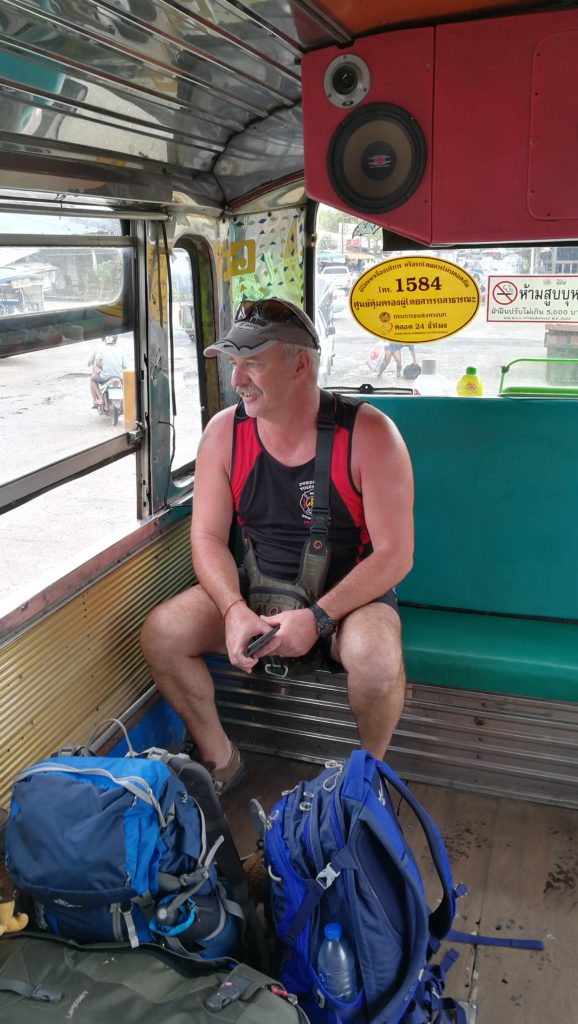
Only 5 hours to go
Just when I thought we had braved the local transport and survived, the bus waiting for us was in an even more dilapidated state than the one we arrived on!
Oh well, we had a smiling bus captain and an obliging bus boy so we managed to score the back seat with our packs in the wide space in front of us. At least we could make sure they weren’t going to go flying out the door which was kept open by the trusty bungy cord.
Safe and Sound in Kanchanaburi
After a long but uneventful bus trip, we arrived in Kanchanaburi, jumped on a Songtaew (taxi truck) and arrived at our accommodation for the next 4 nights.
Unlike Sangkhlaburi, we pre-booked our accommodation, initially for 2 nights. This is so we can make sure that it is in a good location, clean, comfortable and quiet. It ticked all these boxes so negotiated a better rate for a further 2 nights.
We stayed at U Dee Room and Coffee. We initially paid 756THB ($31nz) for the first 2 nights and 700THB ($29nz) for the final 2 nights. Tea, coffee and basic breakfast snacks were included.
On the War History Path
Kanchanaburi is larger than what we remembered when we made a fleeting visit around 8 years ago. We were in and out so quickly on a guided tour from Bangkok so we didn’t really get to see much of the surrounding district.
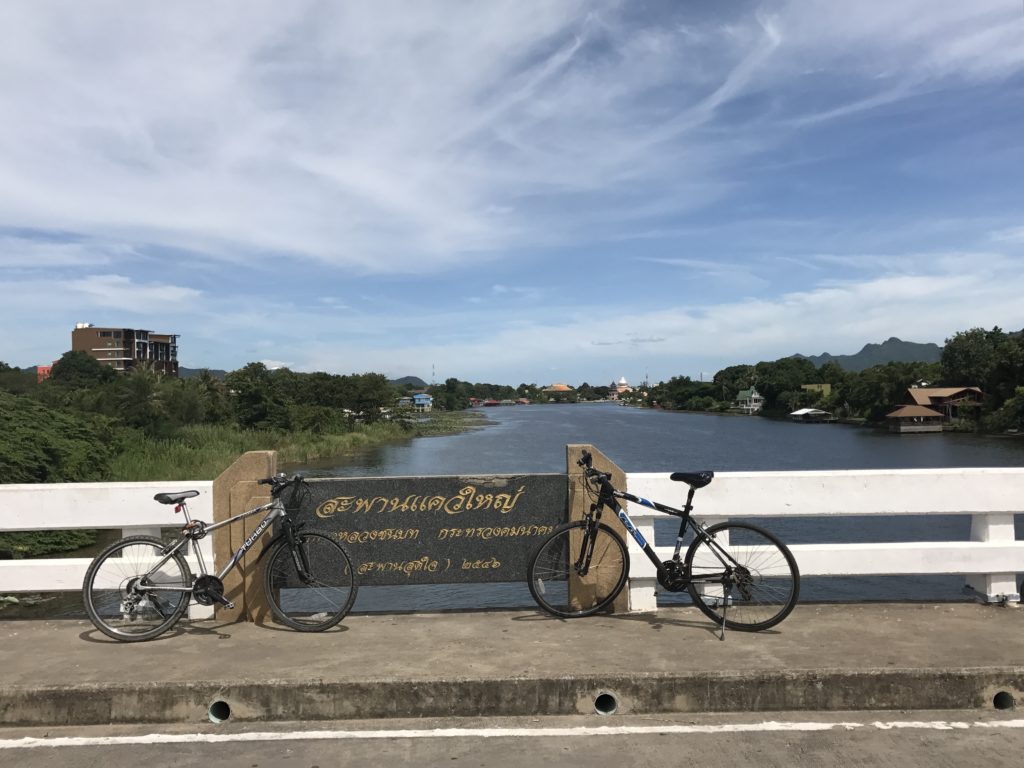
Cycling is a great way to get around
We found a great place to hire a couple of bicycles for the day (Swali Tree Cafe). It cost us a grand total of 160THB ($6nz) for both bikes.
Because it was going to be another scorcher of a day, we headed out early. We headed to the furthermost point and work our way back to town.
Chungkai War Cemetery
Chungkai War Cemetery is one of the least visited cemetery’s due to it’s location being 5km outside the town. It was a flat bicycle ride out there for us with good roads.
The graves of those who died during the construction and maintenance of the Death Railway (except for the Americans, whose bodies were sent home) were transferred from camp burial grounds and isolated sites along the railway into three cemeteries. These cemetery’s were Chungkai and Kanchanaburi in Thailand and also a cemetery in Myanmar.
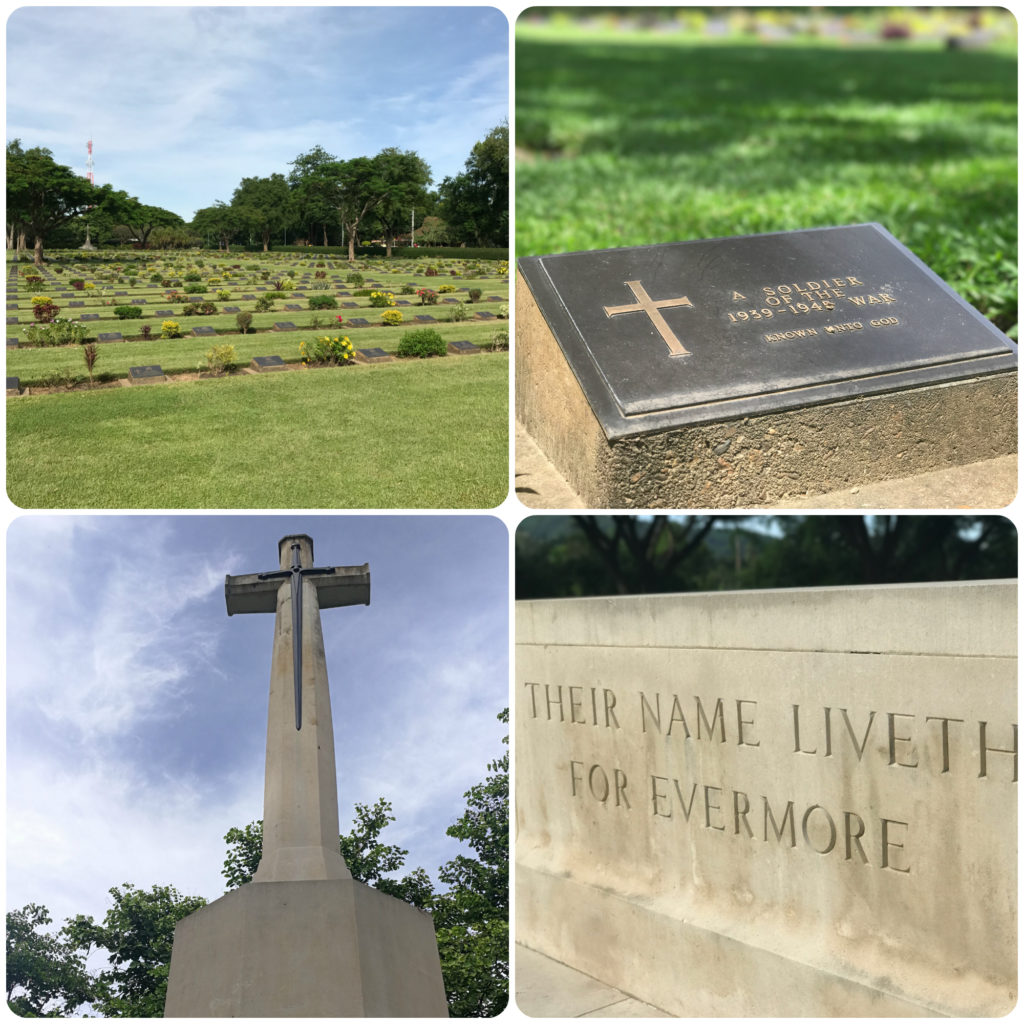
Chungkai was one of the base camps on the railway and a hospital and church was built by the POW’s. The cemetery is the original burial ground started by the POWs themselves, and the burials are mostly of the men who died at the hospital.
There are now 1,426 Commonwealth and 313 Dutch burials of the Second World War in this cemetery.
It is a serene spot, located at the point where the river Kwai divides into two separate rivers; the Mae Khlong River and Kwai Noi River. A peaceful and well maintained place for their final resting place.
Kanchanaburi War Cemetery
We cycled back into town and made our way to the Kanchanaburi War Cemetery (Don-Rak War Cemetery). Although it is not the first cemetery used for the POWs it is the largest of the two as the majority of the Australian POWs were moved from Chungkai to this one.
There are 6,982 POWs buried here, mostly Australian, British and Dutch. There are also two graves containing the ashes of 300 men who were cremated and names from India who are buried in Muslim cemeteries.
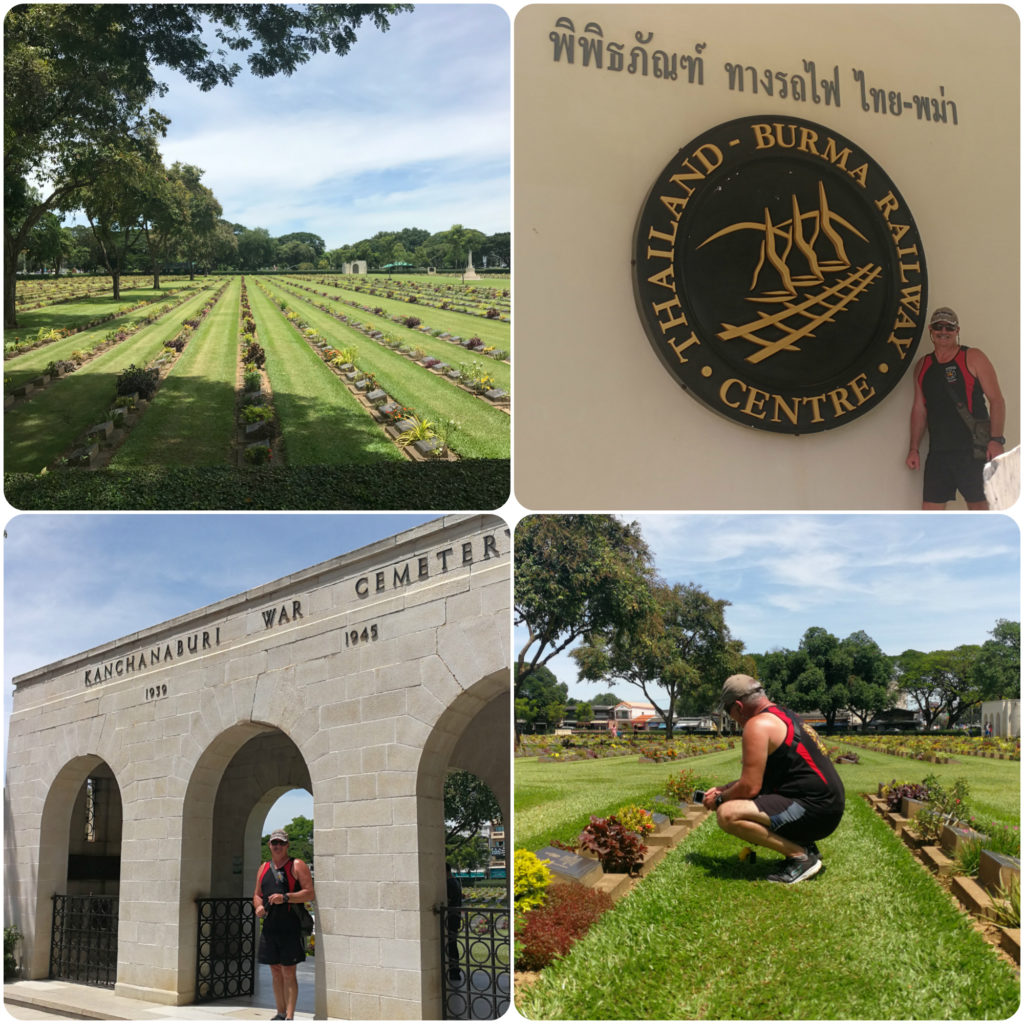
Like Chungkai, the cemetery is beautifully maintained and a fitting tribute to these POWs who lost their lives in such tragic circumstances. The cemetery is maintained by the Commonwealth War Graves Commission.
There is also an older Chinese cemetery adjacent to Don-Rak.
Thailand-Burma Railway Centre
Directly across the road from the cemetery is located the Thailand-Burma Railway Centre.
There are three museums devoted to the World War II history of the area. They are all privately run.
The Thailand-Burma Railway Centre is the newest of the museums around Kanchanaburi dedicated to the WWII era history of the area. The privately run center houses well-done displays about the history of the construction of the railway, as well as detailed descriptions of the lives of the prisoners who built the line.
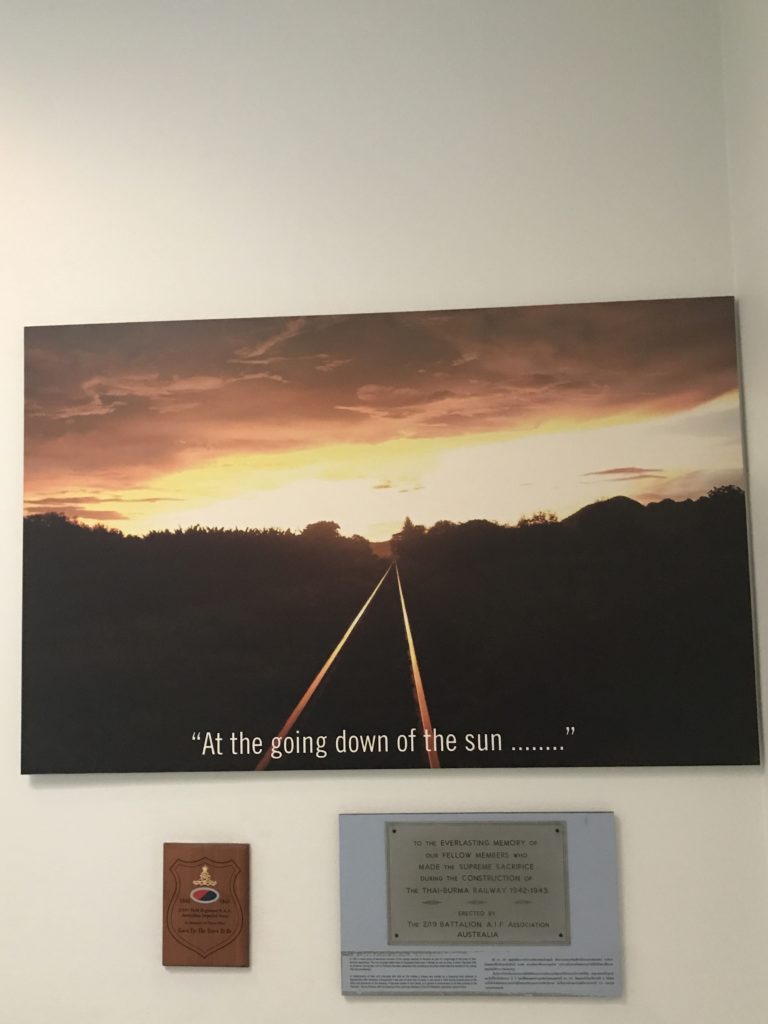
No photos or videos can be taken inside the museum
The other two museums are JEATH War Museum and World War II and JEATH War Museum (confusing right?).
Many of the reviews we read online were a confusion between the 3 museums. Quite often the Thailand-Burma Railway Centre is called different names (Thai-Burma Research Centre, Thai-Burmese Railway Centre, Death Railway War Museum) just to add to the confusion.
World War II and JEATH War Museum
The World War II and JEATH War Museum was another of the three museums we visited.
JEATH is an acronym for the primary nations which participated in the building of the railway. These nations are Japan, England, Australia, Thailand and Holland.
The best part of this museum is the location. It is situated right beside the Bridge Over the River Kwai and is probably the only reason why they get the numbers through.
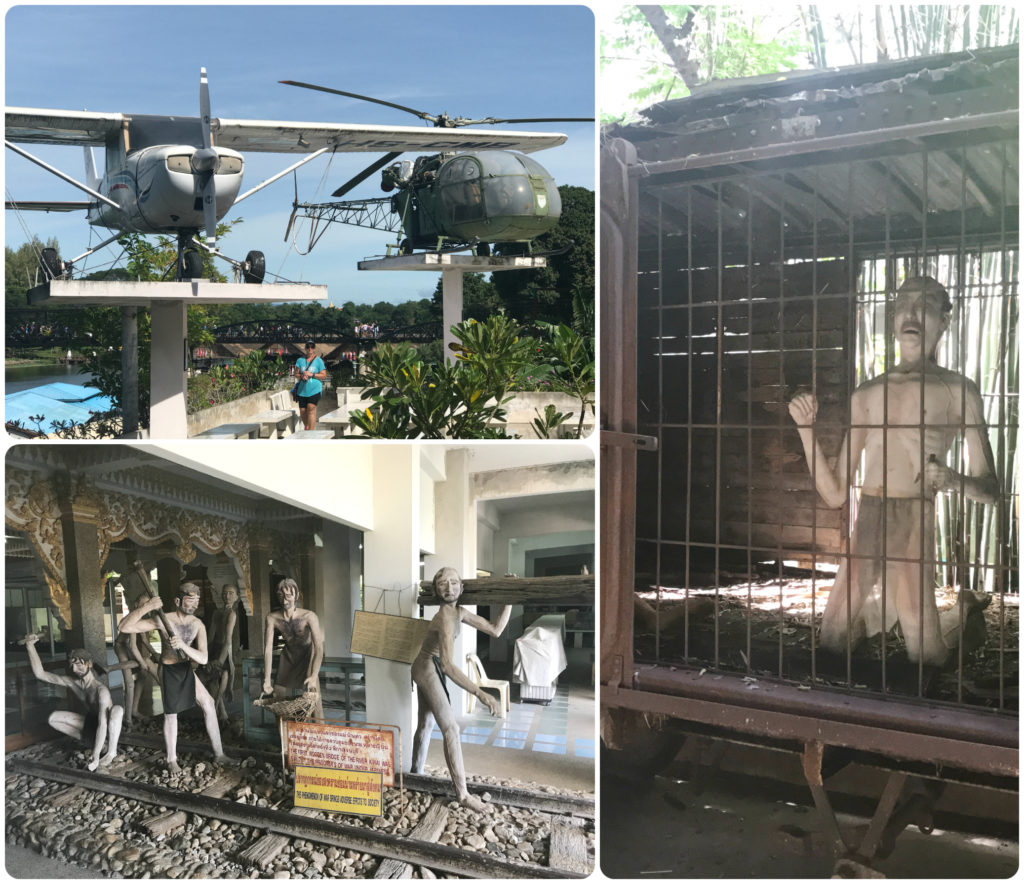
We climbed the stairs to the top of one of the display buildings and it offers a fabulous view of the bridge – especially when the train arrives enroute to Nam Tok. This was to be the highlight of our visit to this museum.
We found the museum to be in need of a good clean and some serious maintenance required. There were still some interesting items on display from the war years. These were interspersed with a random collection of more modern memorabilia. This included a room dedicated to displays of outfits worn by Miss Thailand.
JEATH Museum
This JEATH Museum is not to be confused with the museum above.
This museum was created in 1977 by the chief abbot of Wat Chaichumpol and is located approximately 5km fromthe rail bridge, on the grounds of the temple. It’s a lovely location at the junction of Khwae Yai and Khwae Noi rivers.
The museum is divided into two sections. One tells the story of the construction of the Death Railway and the other consits of reconstructed bamboo huts. These huts contain items of paintings, drawings and photos of and by former prisoners. There are also examples of weapons, tools and maps.
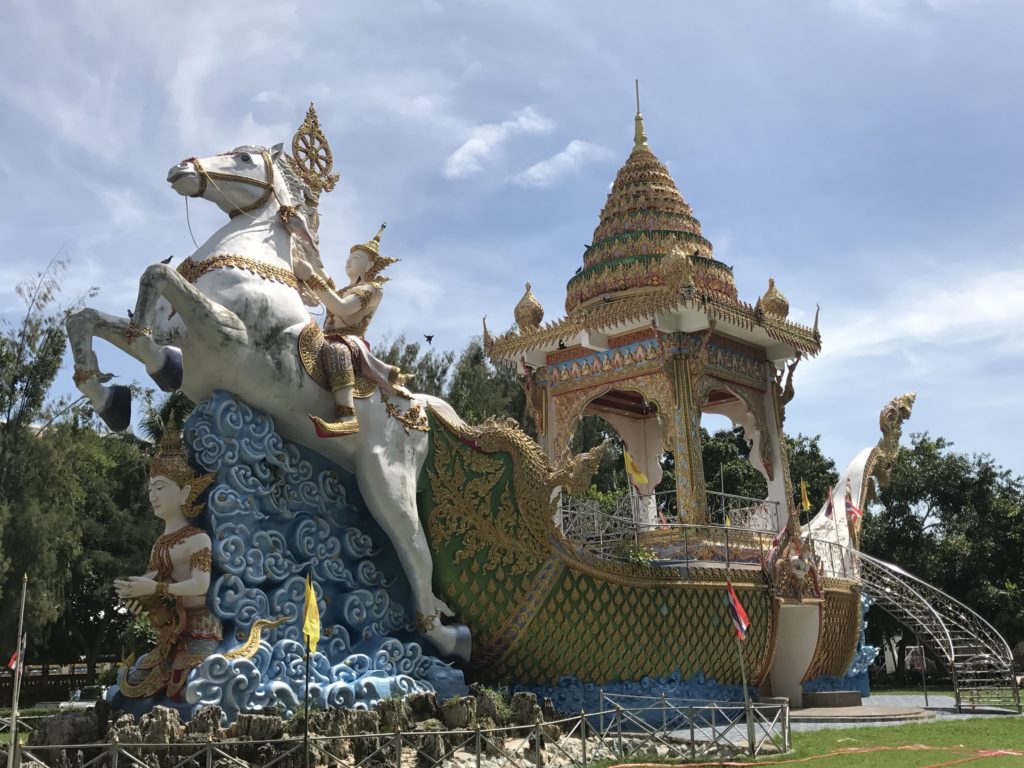
An added bonus to our trip out to the museum was the very impressive temple and monument. Quite a surprise to round a corner and see this structure depicting a rather large boat. Quite different to any other moment we’ve seen in Thailand.
Bridge Over The River Kwai
Kanchanaburi is most known for this iconic attraction thanks to a 1957 British-American fictional war film. The movie was actually filmed in Sri Lanka and the bridge at Kanchanaburi was never used in the filming.
On our last visit here, we were a little dismayed at the commercialism of the site. The track on both sides of the bridge is lined with stallholders cashing in on the hoards of tourist who arrive daily.
Trying to walk the bridge is no easy feat as you duck and dive crowds stopped along the tracks taking the obligatory selfie. I would guess that the majority of these laughing and jeering tourists have no idea as to the meaning and story behind the building of this bridge and blood shed because of it.
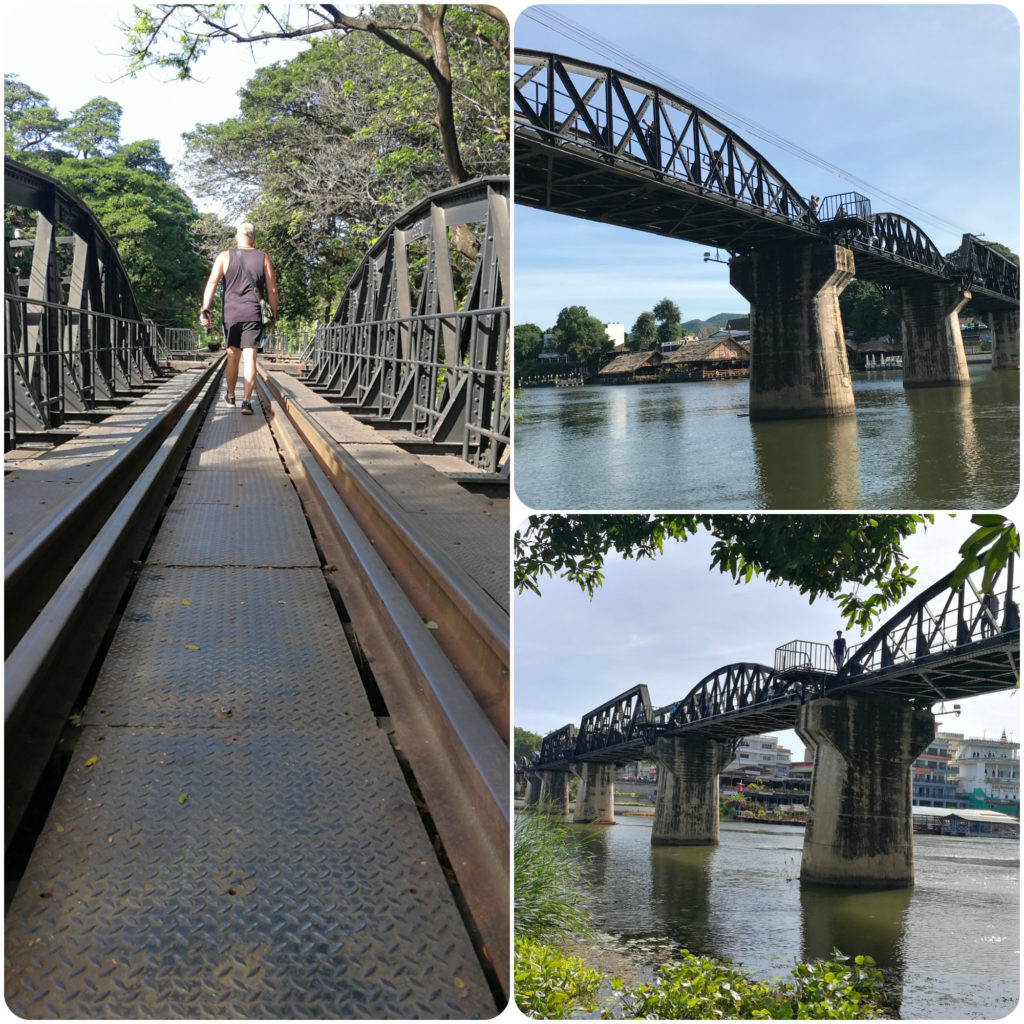
We set off on foot from our lodgings to visit the bridge early morning, before the crowds. FAIL, we were only about a 15 minute walk away and arrived at 8.30am and even then, there was no way were ever going to get a snapshot without anyone else in the shot.
Not only does the usable railway lines run along the bridge but a walkway with side platforms have been developed. This allows crossing the bridge on foot. The platforms are useful as viewpoints and for avoiding oncoming trains that frequent the bridge daily.
Being blessed with plenty of time, we spent some time wandering around, under and over the bridge.
Allied Forces bombed the iron bridge in 1944 and three sections of the bridge were destroyed. The present bridge has two of its central spans rebuilt, hence the different shapes in the centre section.
The Chinese Temple and Buddha Statue are also well worth a visit. The location across the river makes for an impressive site as you wander across the bridge. We spent an amount of time wandering around the serene grounds and also get a different perspective of the bridge.
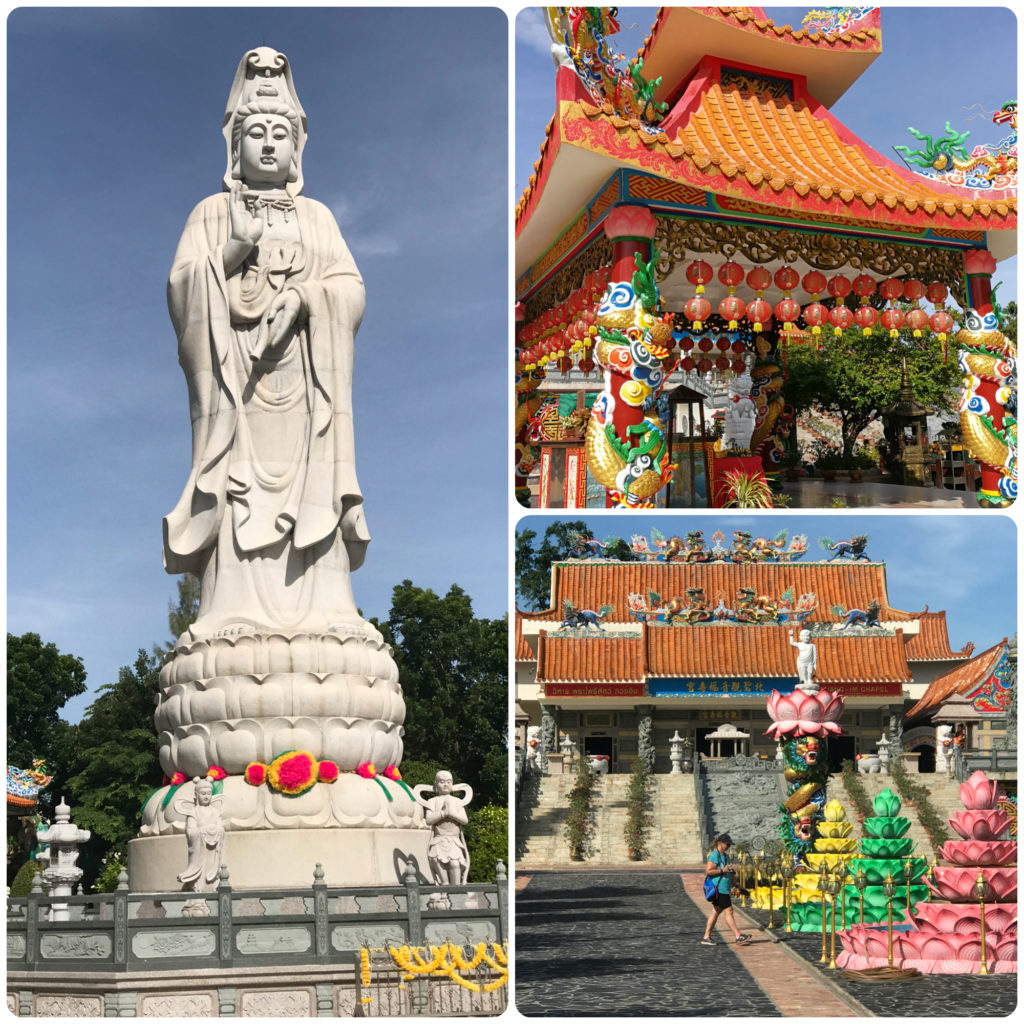
Summary
Even if war history and wandering around cemetery’s aren’t your thing, we still think that Kanchanaburi warrants more than just a fleeting day trip from Bangkok.
Having done the trip this way in the past, there is way more on offer than rushing through the main attractions.
There are so many more things you can see further a field such as waterfalls and National Parks.
If you have a couple of nights to spare, why not take the public train and spend some time in this interesting area.
Click on the video below for some of our highlights of our stay in Kanchanaburi.
